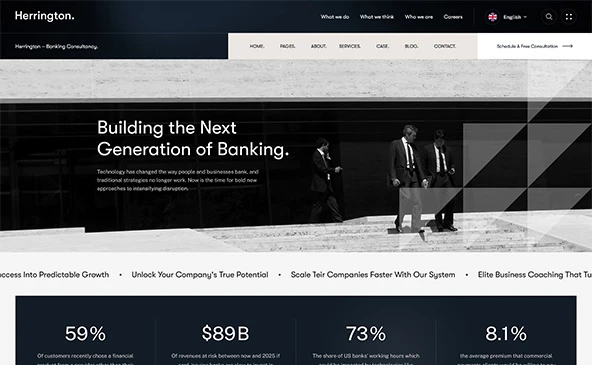In today’s fast-evolving financial landscape, banks are facing unprecedented pressure to modernize. Emerging technologies, shifting customer expectations, and the rise of digital-first competitors mean that traditional banking models are no longer enough. To stay relevant and competitive, financial institutions must embrace technological transformation in strategic, forward-thinking ways.

The Importance of Digital Transformation in Banking
Digital transformation in banking is no longer optional—it is essential for survival. Integrating advanced technology solutions not only enhances operational efficiency but also strengthens customer trust and satisfaction. By leveraging tools such as AI, blockchain, and cloud computing, banks can automate routine processes, reduce errors, and create a more seamless experience for customers. The speed of transactions, security of data, and accessibility of services all contribute to a stronger market position.
1. Reimagining Customer Experience with AI
Artificial intelligence is reshaping the way banks interact with customers. From chatbots providing instant support to predictive analytics guiding personalized financial advice, AI enables banks to deliver more intuitive and responsive experiences. Customers increasingly expect quick, personalized solutions, and AI allows institutions to meet those demands at scale. Ian Taylor, an adviser to CryptoUK, remarked, “A focused digital team demonstrates the bank’s seriousness about technology-driven engagement.” By implementing AI strategically, banks can transform customer service into a competitive differentiator rather than a routine function.
2. Streamlining Operations with Automation
Operational efficiency is one of the most tangible benefits of technological adoption. Automation allows banks to handle repetitive tasks—such as compliance checks, account reconciliation, and report generation—faster and with fewer errors. This shift frees up human resources for high-value decision-making and innovation. Modern automation solutions can also integrate across departments, creating a cohesive system that reduces bottlenecks and improves overall productivity.
3. Strengthening Security Through Advanced Technology
As banking becomes more digital, cybersecurity is no longer just a backend concern—it is a core business priority. Banks must invest in technologies like multi-factor authentication, biometric verification, blockchain-ledger tracking, and AI-driven fraud detection. By proactively managing risks and safeguarding sensitive data, financial institutions build trust and protect their reputations. Security investments are not just defensive; they serve as an enabler for customers to confidently embrace digital banking services.
4. Leveraging Data for Smarter Decision-Making
Data is one of the most powerful assets for banks undergoing digital transformation. By utilizing advanced analytics and AI-driven insights, banks can make smarter lending decisions, detect market trends early, and tailor products to specific customer segments. Predictive analytics and machine learning algorithms help institutions anticipate customer needs and identify growth opportunities that might otherwise remain hidden. In a highly competitive sector, this data-driven approach allows banks to act with precision and agility.
5. Building Scalable Digital Infrastructure
Embracing technological transformation requires a robust digital infrastructure that can scale with evolving demands. Cloud computing, modular software platforms, and open APIs allow banks to innovate quickly while remaining resilient. A scalable infrastructure not only supports current operations but also provides the flexibility to adopt future technologies without costly overhauls. Institutions that prioritize scalable architecture position themselves for long-term growth and adaptability.
Technology is not just a tool for banks—it is the foundation of trust, efficiency, and innovation in the modern financial ecosystem.
Mitchel Krytok – Quote
The journey toward technological transformation is complex but essential. Banks that embrace AI, automation, robust security, data-driven insights, and scalable infrastructure are better equipped to meet customer expectations, streamline operations, and secure their place in the future financial ecosystem. The integration of these strategies demonstrates a commitment to innovation, efficiency, and trust—core values that define the modern banking experience.




















0 Comments
A WordPress Commenter
July 19, 2025, at 18:25Hi, this is a comment.
To get started with moderating, editing, and deleting comments, please visit the Comments screen in the dashboard.
Commenter avatars come from Gravatar.